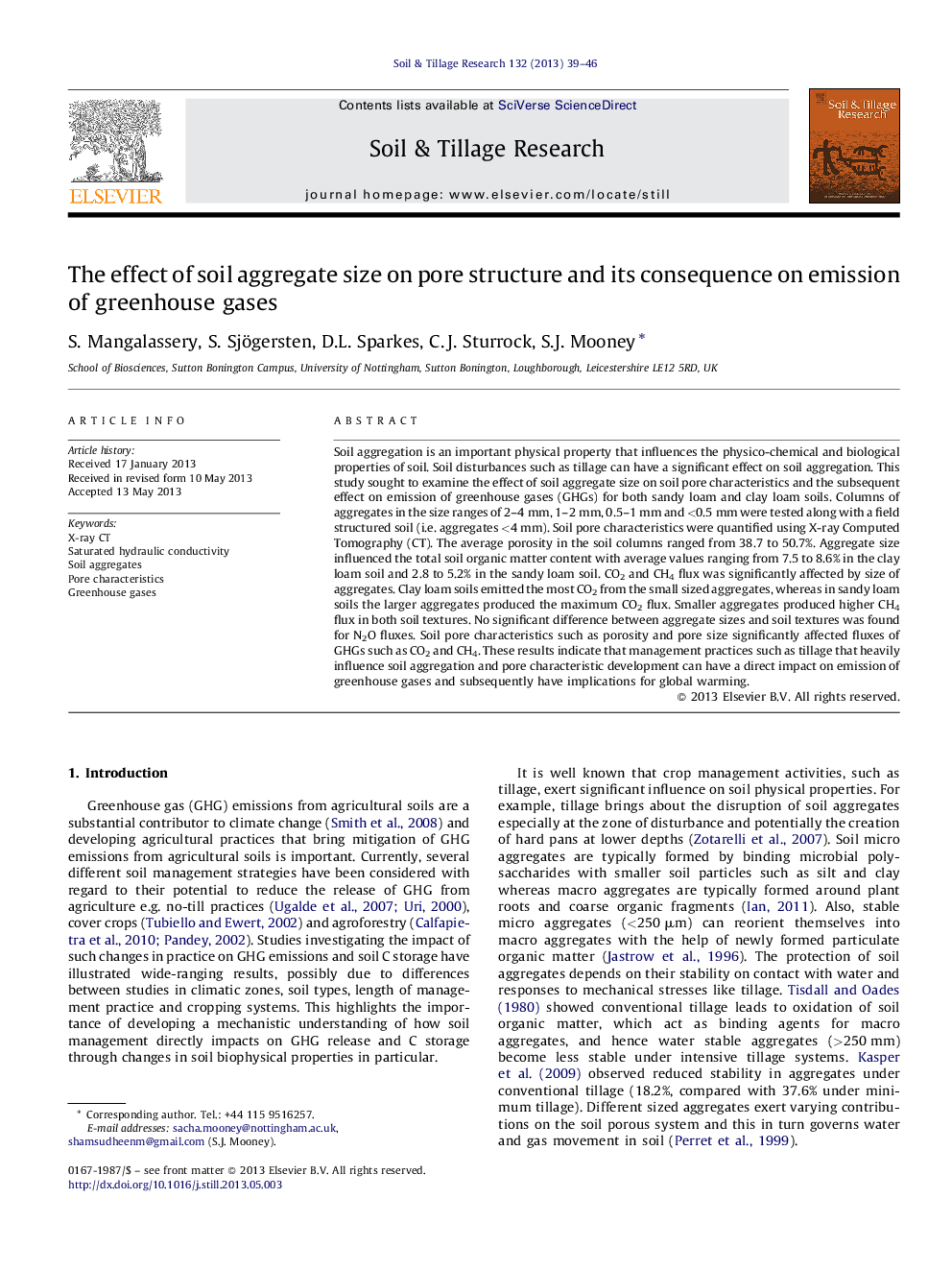| Article ID | Journal | Published Year | Pages | File Type |
|---|---|---|---|---|
| 305852 | Soil and Tillage Research | 2013 | 8 Pages |
•Pore characteristics significantly influenced the release of CO2 and CH4 from soil.•N2O fluxes in soil were not related to soil porous architecture.•Small sized aggregates (<0.5 mm) had the highest CO2 emissions in clay loam soil.•In sandy loam soil highest CO2 emission was from the largest sized aggregates.•Small sized aggregates produced increased CH4 flux in soils.
Soil aggregation is an important physical property that influences the physico-chemical and biological properties of soil. Soil disturbances such as tillage can have a significant effect on soil aggregation. This study sought to examine the effect of soil aggregate size on soil pore characteristics and the subsequent effect on emission of greenhouse gases (GHGs) for both sandy loam and clay loam soils. Columns of aggregates in the size ranges of 2–4 mm, 1–2 mm, 0.5–1 mm and <0.5 mm were tested along with a field structured soil (i.e. aggregates <4 mm). Soil pore characteristics were quantified using X-ray Computed Tomography (CT). The average porosity in the soil columns ranged from 38.7 to 50.7%. Aggregate size influenced the total soil organic matter content with average values ranging from 7.5 to 8.6% in the clay loam soil and 2.8 to 5.2% in the sandy loam soil. CO2 and CH4 flux was significantly affected by size of aggregates. Clay loam soils emitted the most CO2 from the small sized aggregates, whereas in sandy loam soils the larger aggregates produced the maximum CO2 flux. Smaller aggregates produced higher CH4 flux in both soil textures. No significant difference between aggregate sizes and soil textures was found for N2O fluxes. Soil pore characteristics such as porosity and pore size significantly affected fluxes of GHGs such as CO2 and CH4. These results indicate that management practices such as tillage that heavily influence soil aggregation and pore characteristic development can have a direct impact on emission of greenhouse gases and subsequently have implications for global warming.
